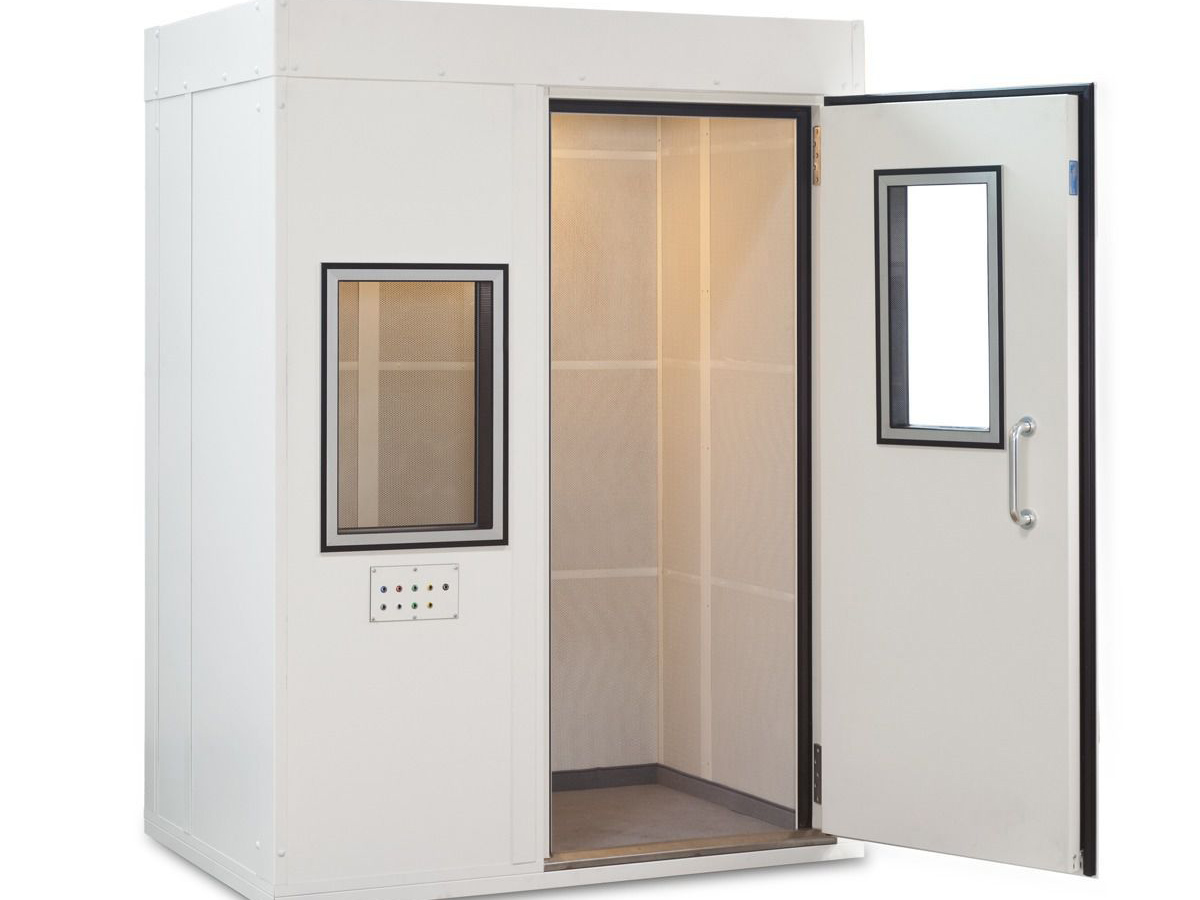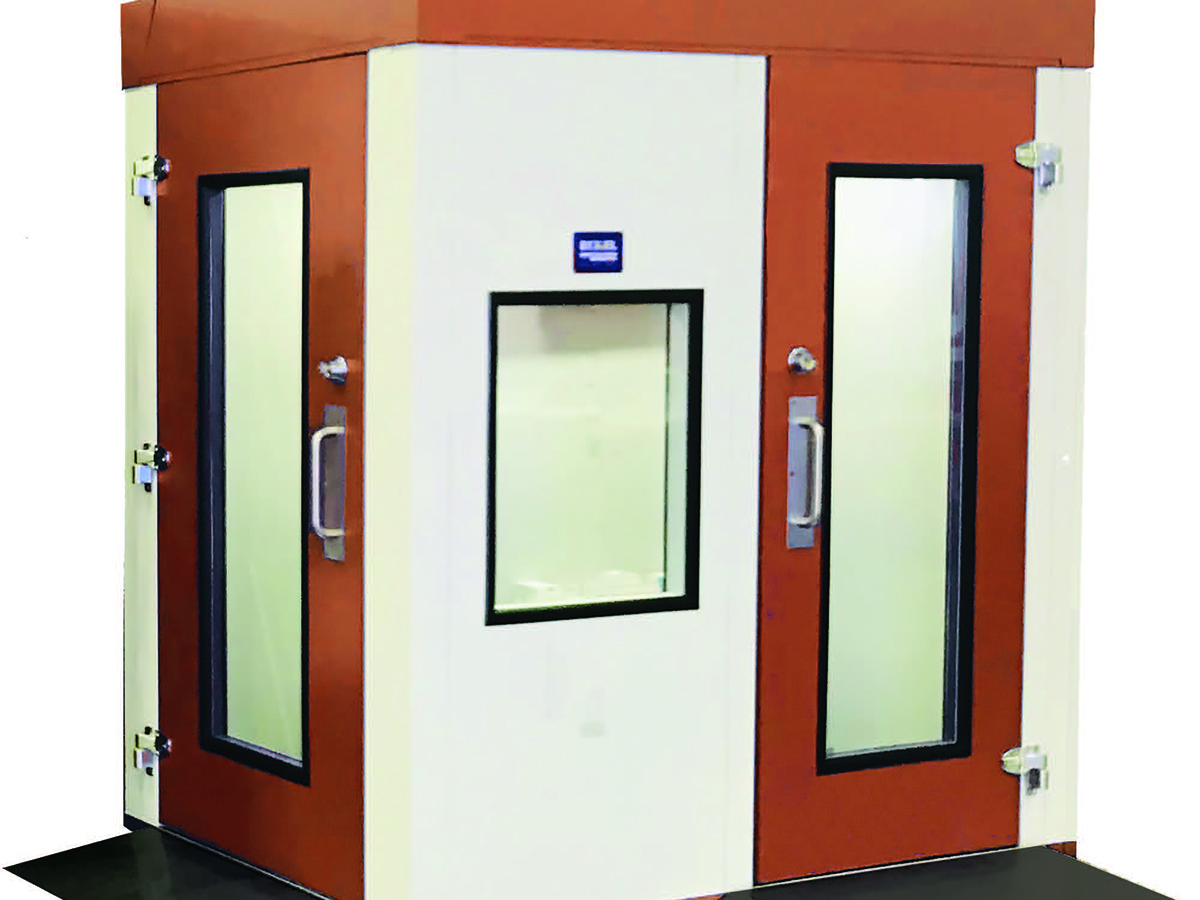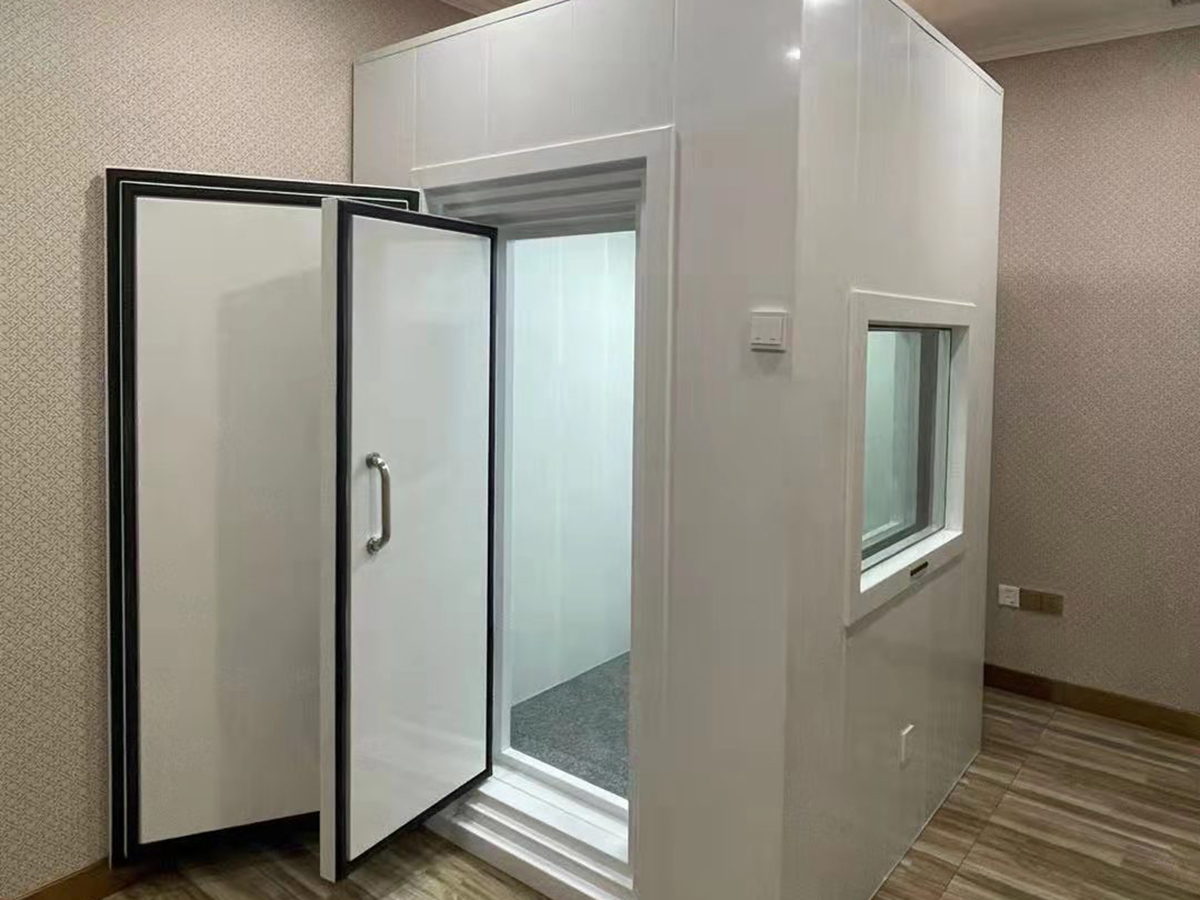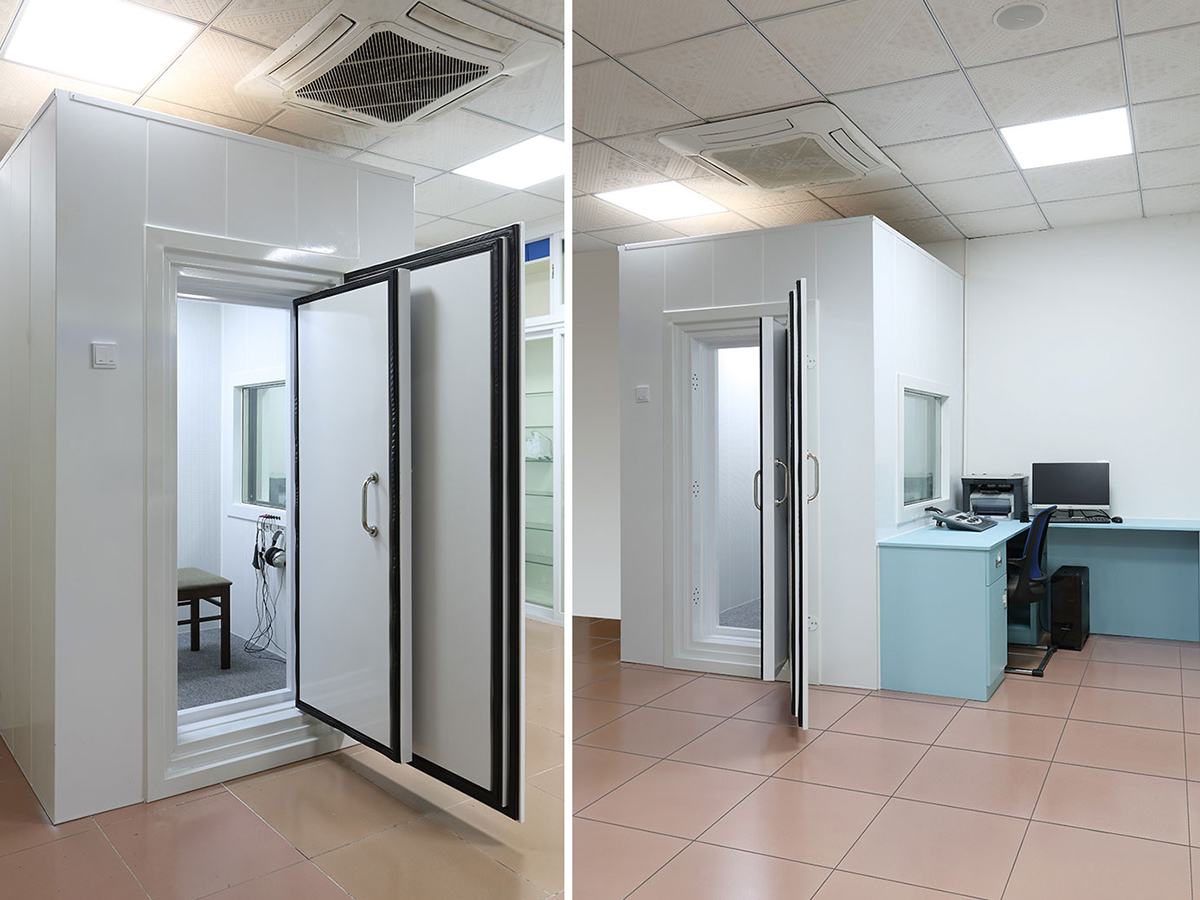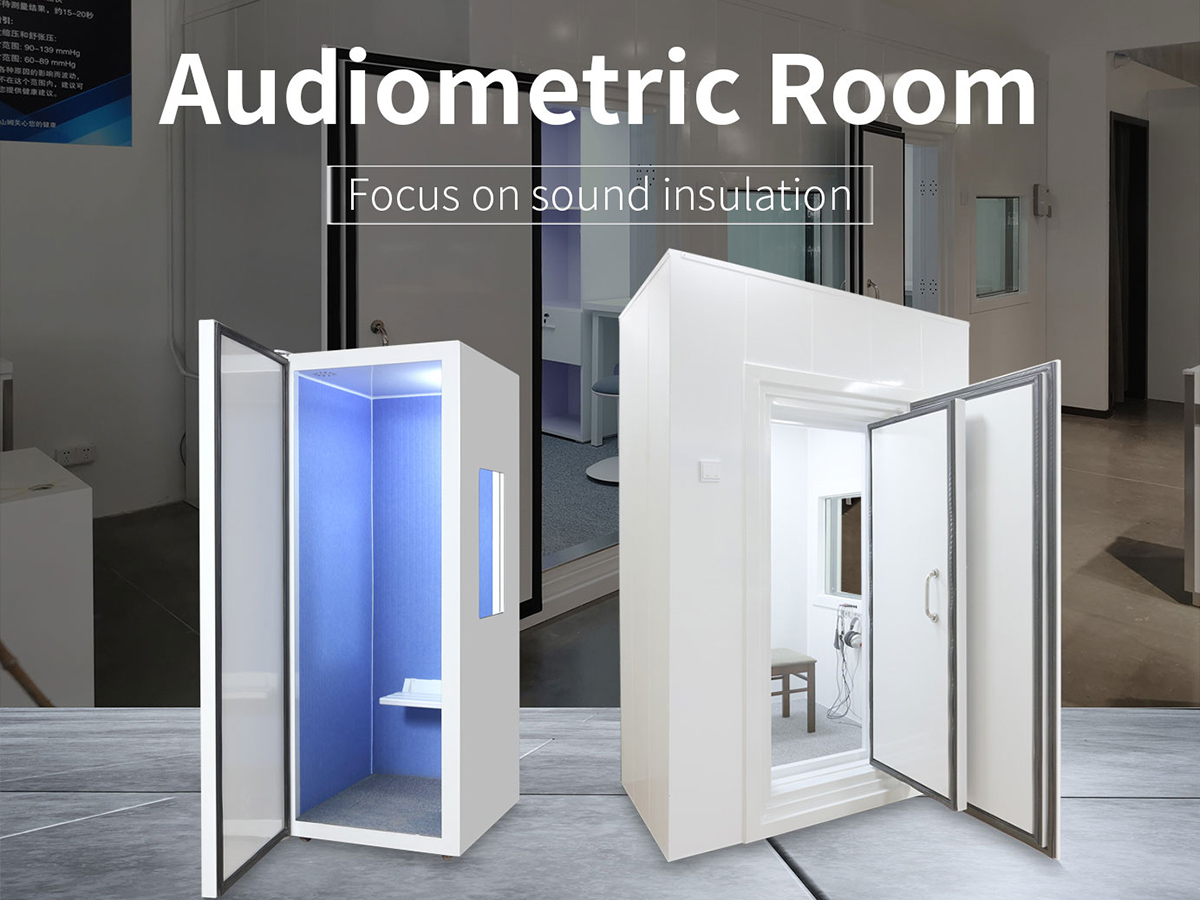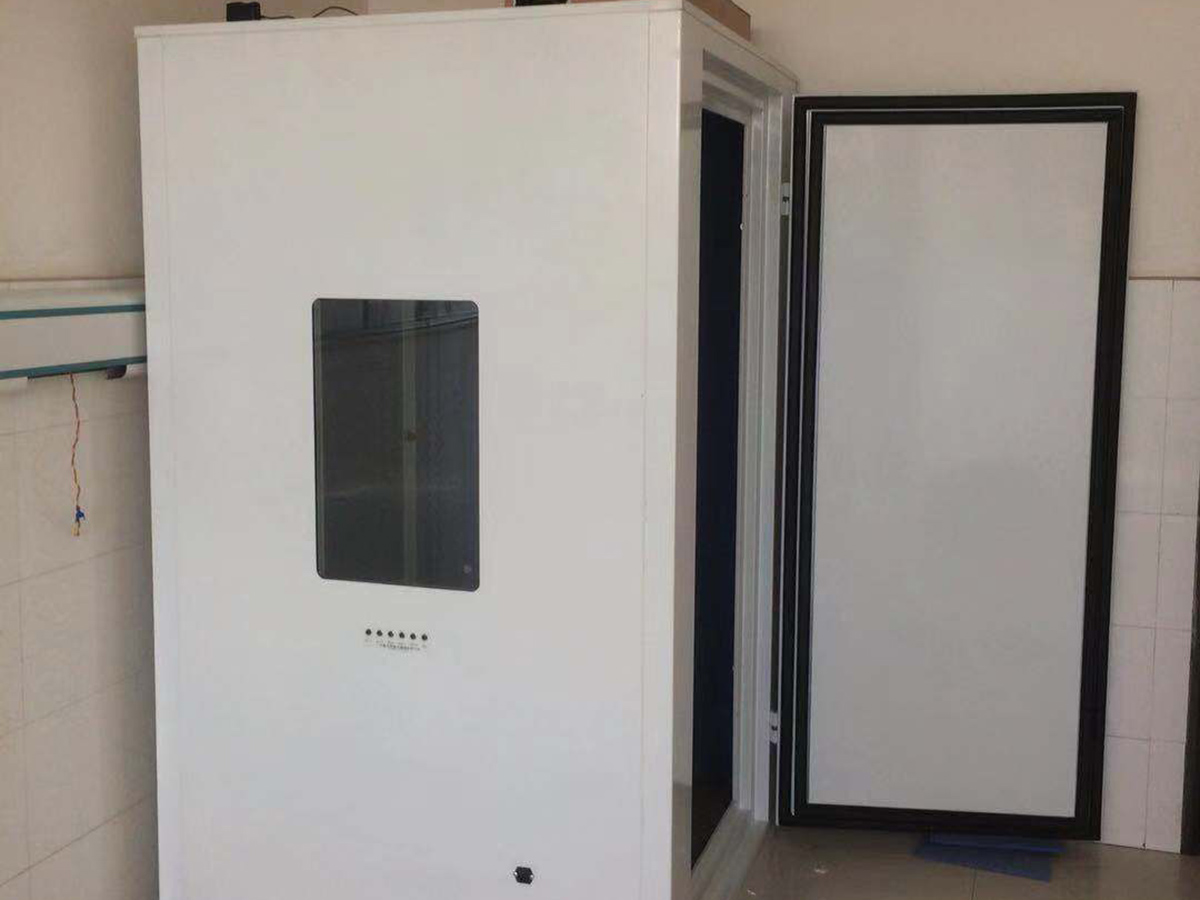An audiometric testing booth, also known as an audiometric booth or sound booth, is a specialized room or enclosure designed for conducting hearing tests and assessments. It provides a controlled environment free from external noise and distractions, allowing accurate measurement of an individual’s hearing ability.
Features of an Audiometric Testing Booth:
- Soundproofing: The booth is constructed with sound-absorbing materials to block external noise from entering and to minimize sound reflections within the room. This ensures a quiet and controlled environment for testing.
- Double-Walled Construction: The booth often consists of double walls, with an air gap in between to further enhance soundproofing.
- Acoustic Door and Windows: The booth typically has an acoustic door and windows designed to reduce sound transmission. They may have airtight seals to prevent sound leakage.
- Ventilation: Proper ventilation is essential to maintain air quality and comfort within the booth. Ventilation systems are designed to minimize noise while ensuring adequate airflow.
- Interior Design: The interior of the booth is usually lined with acoustic panels or foam to absorb sound and minimize reverberation. The materials used are chosen to provide optimal acoustic properties.
- Lighting:The booth is equipped with appropriate lighting to facilitate visual communication between the test administrator and the individual being tested.
- Equipment Integration: Audiometric testing booths are designed to accommodate audiometric equipment such as audiometers, headphones, and other testing devices. They often have built-in shelves or mounting systems to securely hold the equipment.
The primary purpose of an audiometric testing booth is to provide an environment where hearing tests can be conducted accurately and reliably. These tests include pure-tone audiometry, speech audiometry, tympanometry, and other specialized assessments to measure an individual’s hearing thresholds, speech perception, and middle ear function. Audiologists, hearing healthcare professionals, and occupational health specialists commonly use audiometric testing booths in clinics, hospitals, research facilities, and industrial settings to assess and monitor hearing health.

